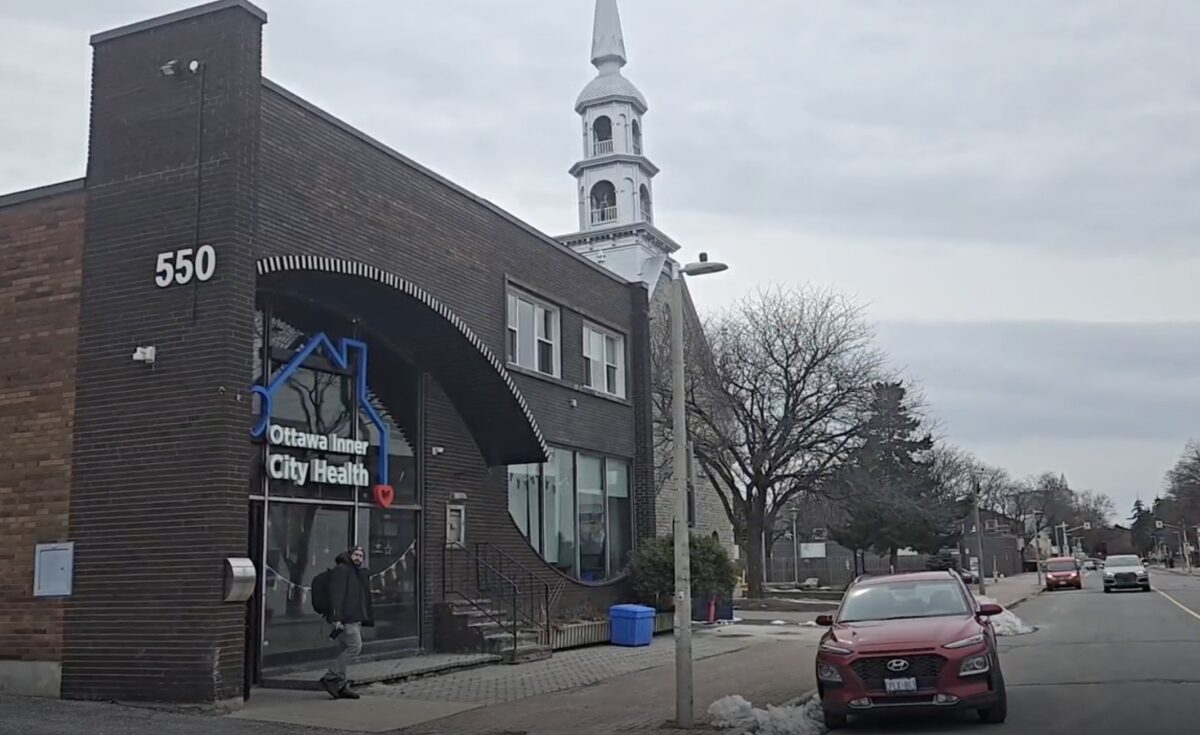A leading defender of harm reduction services in Ottawa says the Ontario government’s push to convert safe consumption sites to HART hubs is misguided.
Rob Boyd, CEO of Ottawa Inner City Health — one of just three remaining safe consumption sites in the capital — said the province’s new approach to Canada’s overdose and toxic drugs crisis means Ontario is “going to lose people” who could otherwise have been kept alive.
The Somerset West Community Health Centre (SWCHC) is one of 10 sites in Ontario to close following the introduction of new regulations by the Ontario government this past August. The site had been operating since 2018 and reversed 487 overdoses in 2024 alone, the centre has stated.
SWCHC, located on Eccles Street in Ottawa’s Chinatown neighbourhood, closed its harm reduction services on March 31 after the provincial policy banned supervised consumption sites within 200 metres of schools or childcare facilities.
The next day, the centre started becoming a Homelessness and Addiction Recovery Treatment (HART) hub. The service offers showers, vital supplies, meals and health-promoting activities to help those in need.

However, HART hubs no longer offer harm reduction tools such as supervised consumption, safer supply and needle exchange.
Future phases of the HART hub treatment program aim to give those struggling with addiction basic health care, mental health support, help finding housing, addiction treatment and professional withdrawal assistance.
The moment you don’t give people something very practical that they need in the moment, you’re going to lose people.
— Rob Boyd, CEO, Ottawa Inner City Health
With the closure of Somerset West’s safe injection site, only three remain in Ottawa — the Sandy Hill Community Health Centre, the Healthy Sexuality and Risk Reduction Unit and Ottawa Inner City Health in Lowertown.
In announcing its transition to the HART hub model, Somerset West issued a statement highlighting its cooperation with the remaining supervised consumption sites in the city.
“Somerset West CHC recognizes the critical impact of losing its Consumption and Treatment Service, as well as associated harm reduction services like safer supply and needle exchange,” the centre stated. “In response, Somerset West CHC is collaborating with other providers to transition clients to alternative harm reduction programs. Three other Consumption and Treatment Services remain available in Ottawa, and Somerset West CHC will actively facilitate referrals to these resources.”
Harm reduction experts are concerned that pursuing a recovery-oriented approach while taking away harm reduction resources will create holes in the healthcare system amid the toxic drug crisis.
“We really have been set up for failure,” said Boyd. “The moment you don’t give people something very practical that they need in the moment, you’re going to lose people.”
Boyd said the drug supply has changed drastically over the past decade.

“It’s very different now than when the sites first opened up. When we had a prescription opioid crisis, the main drug that was being used was prescribed oxycontin. Whereas now things have shifted quite drastically and very quickly to a toxic drug supply, which has significantly increased the risk of death.”
The Ontario government explained its decision in January, saying it was “protecting the safety of children and communities” by closing sites where substance users had access to safe supplies.
“We have heard loud and clear from families across Ontario that drug injection sites near schools and childcare centres are making our communities less safe,” said Sylvia Jones, Ontario’s deputy premier and minister of health.
The province has committed to opening 28 HART hubs and spending $550 million to support them. Harm reduction sites that transition to HART Hubs are receiving four times more funding and a one-time startup bonus.
But Boyd said this policy shift is counterproductive and will force those struggling with addiction to use drugs in public without supervision.
“The moment you start raising barriers, you’re going to lose people.” Boyd said. “The drug use is embedded in their circumstances right now; not having availability of a consumption site is not going to stop them.”
An injunction granted by Justice John Callaghan of the Ontario Superior Court of Justice allowed some sites to remain open for an additional 30 days. However, the provincial policy prioritizing the transition to HART hubs remains in place.
Health Canada says more than 50,000 people have died from opioid overdoses in Canada between January 2016 and September 2024.
Boyd said he fears that with the closure of sites, these figures will rise because harm reduction sites “are spaces of urgent need for individuals and spaces where we do our best to keep people alive as long as possible.”




